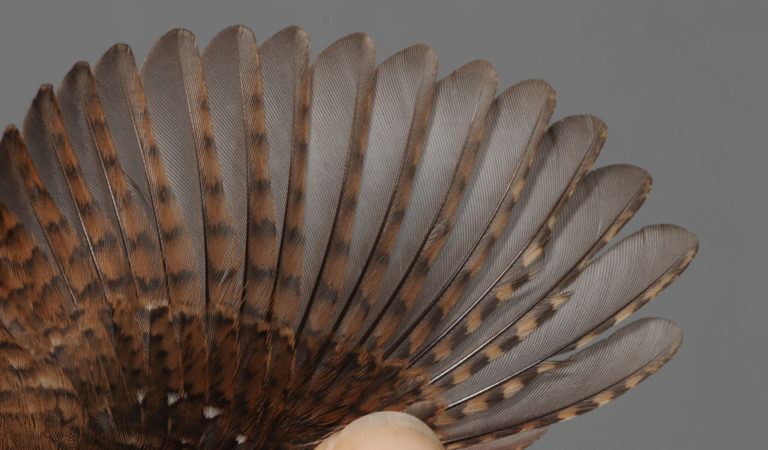

Eurasian Wren
AGE – BEST CRITERIA:

2cy April. SS and PP show a typically juvenile pattern with rather diffuse and slightly irregular dark bars in the outer vanes. The pale spots on outer PP on this bird are paler than in average 2cy but still slightly less contrasting than in average adult birds. According to Ward & Feu (2006) juvenile P4 in British Wrens show 7-9 pale spots compared to 9-12 in adult P4. However, some birds show spots that are less easy to count. Note that GC1-4 are juvenile. [CP42749]
More Troglodytes troglodytes:
Ringers’ DigiGuide is sponsored by: